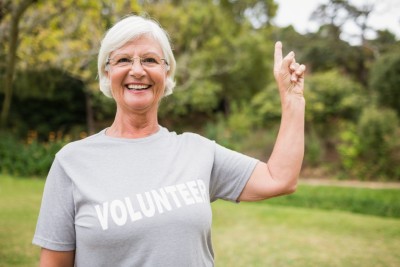 A survey form the National Council on Aging, UnitedHealthcare and USA Today concluded that most Boomers are optimistic about their future. That is until you ask them about needing help as they age. When it comes to the issues surrounding who will provide caregiving when they no longer are able, optimism turns to fear.
A survey form the National Council on Aging, UnitedHealthcare and USA Today concluded that most Boomers are optimistic about their future. That is until you ask them about needing help as they age. When it comes to the issues surrounding who will provide caregiving when they no longer are able, optimism turns to fear.
The Paraprofessional Healthcare Institute (PHI), a New York-based nonprofit that supports the home care industry, has created a new campaign to address and solve the chronic shortage of health care workers in the United States.
The “60 Caregiver Issues” campaign points out the country needs five million caregivers in the next seven years in order to keep pace with the growing demand from a rapidly aging society. The first issue briefing, The Future of Long-Term Care, lists eight signs the shortage in paid caregivers is getting worse. Those signs are:
- The population of older adults in the U.S. continues to rapidly age, igniting demand for long-term services and supports.
- A sizable growth in elders and people with disabilities means a growing demand for paid caregivers: home health aides, nursing assistants and personal care aides.
- The primary labor pool for direct care workers isn’t keeping pace with national trends, raising concerns about the broad appeal of this occupation.
- Direct care workers are leaving the occupation in droves.
- The workforce shortage in paid caregivers might be affecting areas of the country differently.
- Policymakers, long-term care providers and the general public are hampered by the lack of available data and research on the direct care workforce.
- Home care providers and other long-term care entities cite the workforce shortage as a top concern for delivering quality care.
- The shortage in workers extends beyond long-term care—and is garnering public attention.
Now let’s look at the state of family caregivers. A report by the Public Policy Institute (2013) researched the statistics for family caregivers, who provide the majority of long-term services and supports (LTSS).
The Caregiver Support Ratio is defined as the number of potential family caregivers (mostly adult children) aged 45 – 64 for each person aged 80 and older – those most likely to need LTSS. The caregiver support ratio is used to estimate the availability of family caregivers during the next few decades.
In 2010, the caregiver support ratio was more than 7 potential caregivers for every person in the high-risk years of 80-plus.
In 2030, the ratio is projected to decline sharply to 4 to 1; and is expected to further fall to less than 3 to 1 in 2050.
Steep rising demand as the population rapidly ages, combined with professional caregiver shortages and shrinking families requires more than policy action. Every stakeholder (and that takes in to account ALL of us) must take it upon themselves to be better educated on aging issues, plan for their future and make healthy aging a priority. Just as healthcare has created the need for us to be our own advocates for our health, we must certainly take this same position with decisions that we make as we age and may eventually need care.
http://www.nahc.org/NAHCReport/nr170213_1/
Pam Brandon is President/Founder of AGE-u-cate® Training Institute and passionate advocate for older adults and those that care for them.
 Research has shown that volunteering leads to better health and that older volunteers are the most likely to receive physical and mental health benefits from their volunteer activities. Volunteering often leads to what is referred to as a “helper’s high”.
Research has shown that volunteering leads to better health and that older volunteers are the most likely to receive physical and mental health benefits from their volunteer activities. Volunteering often leads to what is referred to as a “helper’s high”.